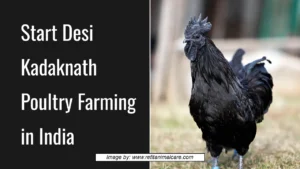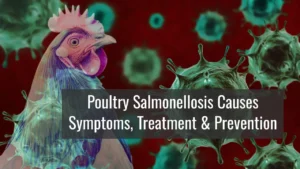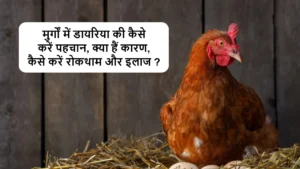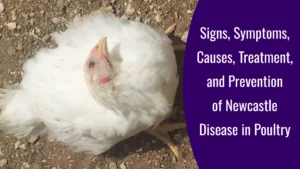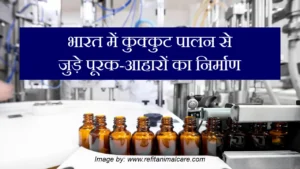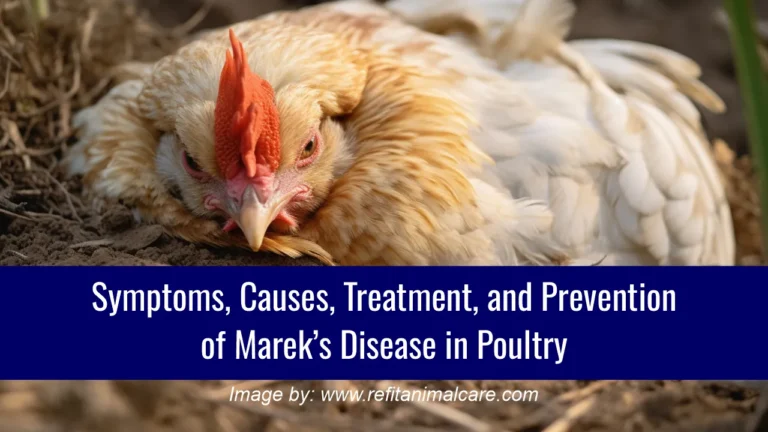
Marek’s disease is a highly contagious and dangerous disease affecting chickens and other poultry, also known as Avian Lymphomatosis. Currently, no cure is available for this easily communicable disease which is caused by herpesvirus, which can infect birds by impacting their nerves, organs, skin, and muscles. Thus, to mitigate and fight this disease, it is important to understand its symptoms, causes, treatment, and prevention. Remember this disease affects both, commercial and backyard poultry.
Symptoms of Marek’s Disease
Marek’s disease can affect young chicks of less than 6 weeks old and adult poultry populations. Following are some of the symptoms through which you can ascertain the onset or effect of this disease.
- Lethargy
- Loss of appetite
- Weight Loss
- Difficulty in breathing
- Diarrhea
- One-sided (unilateral) paralysis
- Wing drooping
- Nerve damage causing twisting of the neck or head
- Blindness
- Enlarged internal organs (liver, spleen, kidneys)
- Sudden death
Acute Leukosis
Found rarely, including rapid growth of tumors in internal organs (heart, ovary, lung, liver, and kidney). Effects include:
- Swollen abdomen
- Difficulty breathing
Cutaneous Form of Marek’s Disease
One can visibly identify it by observing the formation of tumors or bumps on the skin, feather follicles, and nerves. Symptoms include:
- Raised bumps or nodules on the skin
- Swollen legs and feet
- Loss of feathers
Causes of Marek’s Disease
This contagious disease spreads easily when your poultry flock comes in contact with the affected poultry flock. Thus, bird-to-bird contact is the main reason for the cause and fast spread of the disease. This viral disease has an incredible ability to survive in unhygienic, dirty, and badly maintained poultry houses. Routes of entry of this virus in your flock’s body include:
- Inhalation
When an Infected bird sheds its feather, the feather dust contains the virus in ample amounts. It is enough to spread in the atmosphere and when inhaled by healthy birds it can affect them easily.
- Direct Contact
When a healthy poultry comes in direct contact with the water, equipment, feeders, and the area used by the infected flock, the virus can be easily transmitted to the healthy flock.
- People and Equipment
Well, we the people can also be part of transferring the disease, as if we are working with a contaminated flock, then our clothing, boots, and farm equipment can get loaded with the virus, and we knowingly or unknowingly become the mode of transferring the virus from affected flock to the healthy flock.
Treatment for Marek’s Disease
As such no specific cure is available for Marek’s disease, but vaccination does provide some protection. However, this does not mean that we as farm owners should be attentive to the symptoms mentioned above. As a part of preventive treatment or even proactive treatment, you can:
- Quarantine or isolating affected birds
- Also quarantine or isolate new birds before mixing them with your existing healthy lot.
- By doing so you will be minimizing the virus transmission risk.
- Follow and implement strict and thorough environment, food, and shed hygiene do’s and don’t’s to always have a clean and healthy environment.
Prevention of Marek’s Disease
Early-stage preventive vaccination is one of the most important and preferred treatments currently available for Marek’s Disease. Follow various vaccination schedules without fail to keep yourself, and your flock healthy.
- Vaccinate chicks with a single dose while still in the egg at the hatchery. This vaccination methodology is also known as in-ovo Vaccination and is the most effective method for commercial poultry operations.
- The next vaccination stage is preferred to vaccinate day-old chicks with a single dose.
- Final and third vaccination stage, also known as booster dose is given at 2-3 weeks of age to the chicks.
Pro Tip: Consult a local veterinarian or poultry specialist before planning for vaccination.
Poultry Feed Supplements and Marek’s Disease
The importance of poultry feed supplements cannot be ignored. Your poultry flock can remain healthy with a fantastic immune system, only if the feed provided to them is loaded with minerals, immune boosters, vitamins, proteins, and antioxidants. This is only possible to attain through the addition of high-quality, well-researched, and branded poultry feed supplements.
Poultry feed supplements manufactured by Refit Animal Care are one of the best feed supplements available locally. Try to visit their website and check out various poultry feed supplements, and best-sellers. Try to select the ones that suit your requirements, and buy them for a healthy and productive poultry flock. However, for your reference, Lamtone by Refit is the best remedy available for lameness in poultry. Lamtone is a unique formulation that consists appropriate amount of Calcium, Phosphorus, and Organic Minerals that assist in better bone formation and improve egg quality and osteomalacia.
